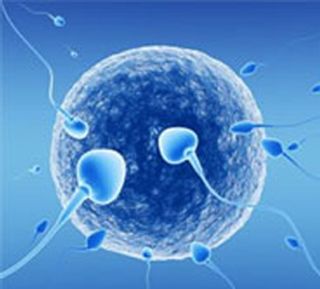 IVF (in vitro fertilization) – fertilization (union of woman’s egg and man’s sperm) outside the woman’s body. The effectiveness of IVF is 35-40 percent. The results depend on the ages of the partners and IVF indications. The optimal age for a woman is 23-40 years. The best results are until 35 years of age; afterwards the percent of conception reduces.
IVF (in vitro fertilization) – fertilization (union of woman’s egg and man’s sperm) outside the woman’s body. The effectiveness of IVF is 35-40 percent. The results depend on the ages of the partners and IVF indications. The optimal age for a woman is 23-40 years. The best results are until 35 years of age; afterwards the percent of conception reduces.
IVF is one of the artificial insemination methods used during puncture and applying anaesthesia; eggs are removed from the ovaries to be fertilised in the laboratory. The fertilized eggs are then cultured in the laboratory for about 2-5 days and then transferred to the uterus of the woman for further growth and development. When preparing for an IVF procedure, a woman’s ovaries are stimulated with medicines in order to produce more and better quality eggs than during a normal cycle. For this reason, more than one egg is received because in a normal cycle the woman normally produces only one egg. More eggs improve the probability of finding a greater amount of embryos suitable for fertilisation.
An IVF procedure is applied when:
- A woman has a tubal blockage;
- A man has poor quality sperm;
- The cause of infertility is of uncertain origin;
- A high level of endometriosis is present.
There are a number of different medications and stimulation schemes for IVF treatment. These medications and schemes are adjusted to the individual need.
Conditions of in vitro fertilization treatment
Conditions necessary for IVF treatment:
- The man’s sperm cells;
- Follicles would mature in the woman’s ovaries if stimulation of the ovaries is applied;
- The woman has a healthy uterus.
Preparation for the IVF procedure and course of the IVF procedure:
- Initial consultation of the doctor.
- Evaluation of infertility reasons.
- Hormone stimulation. In consideration of the status of the patient, a stimulation scheme is adjusted. Ovary stimulation is allocated to the woman, and the growth of follicles is observed.
- The growth of follicles is constantly observed in order to determine the most suitable time for taking eggs.
- When the follicle grows up to 18 mm, chorionic gonadotropin is prescribed for the stimulation of ovulation. The puncturing of follicles (taking of eggs, picture 2) is done 34-36 hours after the injection of this medicine. Eggs are removed from the ovary. A follicle puncture is made with a thin needle through the vaginal wall after applying intravenous anaesthesia.
- Sperm taking. The sperm is taken on the same day; most often straight after the puncture of the follicle.
- Egg insemination. Removed eggs are inseminated with sperm cells in the laboratory.
- Embryo cultivation and transfer. Inseminated eggs are cultivated in the laboratory from 2 to 5 days and are then transferred to the uterus with a special soft catheter.
- Preparation of the uterus mucous membrane. The mucous membrane of the uterus is stimulated when preparing for the acceptance of inseminated eggs (embryos).

Picture 2. Taking of eggs.
Possible complications
Ovarian hyperstimulation syndrome. 3-4 percent of all cycles occur. Many follicles mature because of the influence of hormone medication. Liquid accumulates in abdominal, pleura and pericardium cavities. This syndrome occurs 3 times more often for pregnant woman.
Symptoms: it is hard for the woman to breathe, and the size of the stomach is increased.
Treatment: when a high level of ovary hyperstimulation occurs, the woman is treated in the hospital.
Ovary hyperstimulation syndrome does not influence the end of the pregnancy – the woman can successfully deliver and give birth to her child.
IVF efficiency is 30-40 percent.
